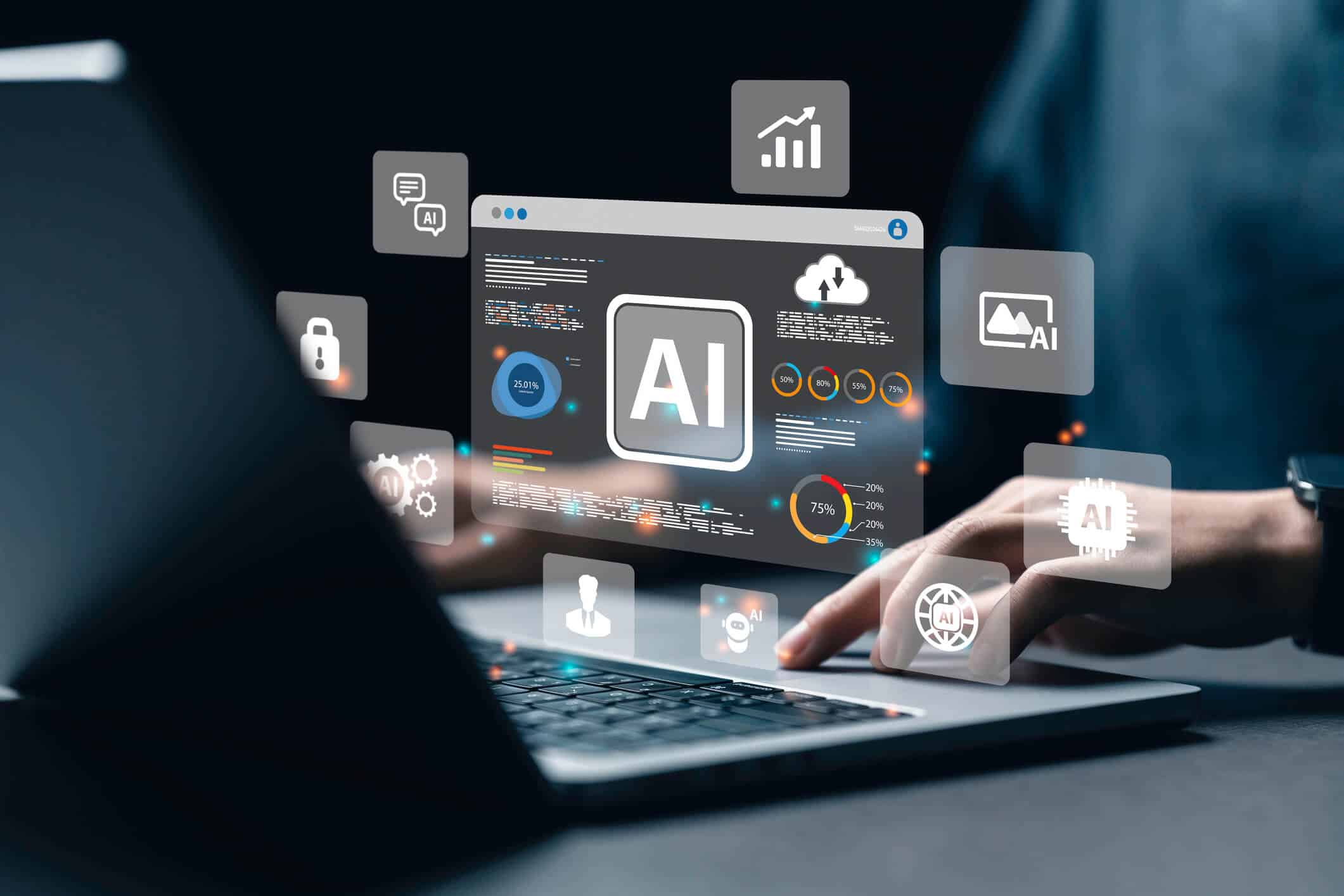
Four crucial cultural shifts to achieve the full potential of AI.
So, you’ve committed to AI. Will the people in the organization adopt AI and leverage it to the fullest? There is more to the success of AI enablement than gathering the data and training AI models. We have found that it is critical to align and activate the culture that will foster the adoption of AI to realize true economic benefits. In fact, there are four cultural shifts required.
1
Shift from hierarchical to collaborative.
|
Old Paradigm |
New Paradigm |
|
Hierarchical structure in which employees look for decisions and actions to flow top-down. |
Collaborative work teams leverage AI to generate recommendations and drive decisions. |
In most organizations, decision-making is centralized with top leaders in the organization, and employees tend to wait for decisions and information to be made and communicated to them. With AI available to your workforce, your employees will have tremendous access to new and better information that can help them improve the business. Keeping your business aligned will require more collaboration at all levels in the organization. This is an organization-wide shift from hierarchical to collaborative, so engaging all affected parts of the organization in the cultural shift will be required. Cultural shifts often require not only sharing this new vision, but the rules of engagement, strategic behaviors, and personal insights that will shift the thinking of employees and embed a common language to foster strong collaboration.
2
Shift from fixed jobs to evolving jobs.
|
Old Paradigm |
New Paradigm |
|
Jobs were fixed and could be mastered. |
Rapid evolution of roles and responsibilities requires being more open to continuous learning. |
Understanding how to operate from a growth rather than fixed mindset enables people to welcome and be excited by the opportunities created by AI. As you leverage AI, you will need to create habits of sharing best practices, learning from others, and seeing challenges as opportunities to grow.
Leaders play a critical role in demonstrating the growth mindset of an organization by their Reflection of Leadership. By this, we mean what leaders model, reward, or tolerate from their employees. We have mirror neurons that constantly monitor people around us to help us learn what behaviors to practice. Thus, we find ourselves acting surprisingly like our parents, modeling the behavior of our peers, and observing ourselves and team members paying close attention to the business interests of our leaders and even adopting their behavioral tendencies.
Leaders will need to model and reward trying new things, being open to change, and responding well to opportunities to grow, thereby sustaining the efforts to achieve the returns for investments in AI.
3
Shift from task completers to innovators.
|
Old Paradigm |
New Paradigm |
|
Focus on completing tasks. The more we do, the more productive we are. |
Focus on solving problems and innovation, seeking to achieve greater impact on organizational results. |
With AI operational, humans are freed from the routine, repetitive, data-intensive tasks. Instead, they will need to address more complex issues requiring problem-solving, critical thinking, and constant innovation. Simply freeing people and asking them to think and behave in new ways they have not experienced together is insufficient for change.
Employees need to develop more of an IMpowerment mindset, an archaic spelling of empowerment. The prefix IM means “from within,” so IMpowerment means to generate power from within. With this mindset, employees will be more proactive, influential, and self-directed. Teams develop habits of solving problems and bringing new ideas forward. They expand their influence across broader parts of the organization. Leaders support teams with IMpowerment coaching for AI adoption and success. That represents a shift for leaders from simply tasking to asking and supporting.
4
Shift from focusing on my job to creating alignment across the organization.
|
Old Paradigm |
New Paradigm |
|
Optimize your information and resources for use on your goals. |
Continuously align teams using shared information and resources that support organizational goals. |
Leveraging AI can disrupt your current operations, processes, and even systems. In fact, you want the innovation that comes from disruption to help you break through barriers and dramatically improve results. However, this disruption will create misalignment and friction within your organization without an increased focus on maintaining alignment across teams. To complement rapid innovation, leadership teams must be able to quickly realign their teams for the innovation to succeed.
Maintaining alignment also requires a greater understanding of the broader organization, including being InTouch with other teams, partners, customers, shareholders, and even our communities. In essence, by aligning on the key stakeholder needs, we better understand what we need to continuously align to.
This alignment creates what people seek in AI: “transparency.” By actively staying in touch through routine practices, we build empathy, understand how we can have a greater impact together, define more valuable opportunities, and leverage our shared resources for extraordinary success.
Our firm has extensive experience aligning and activating organizational cultures for strategic success. To learn more, visit: https://principledtransformation.com/
Copyright © 2024 Principled Transformation LLC – All Rights Reserved. | Privacy Policy


